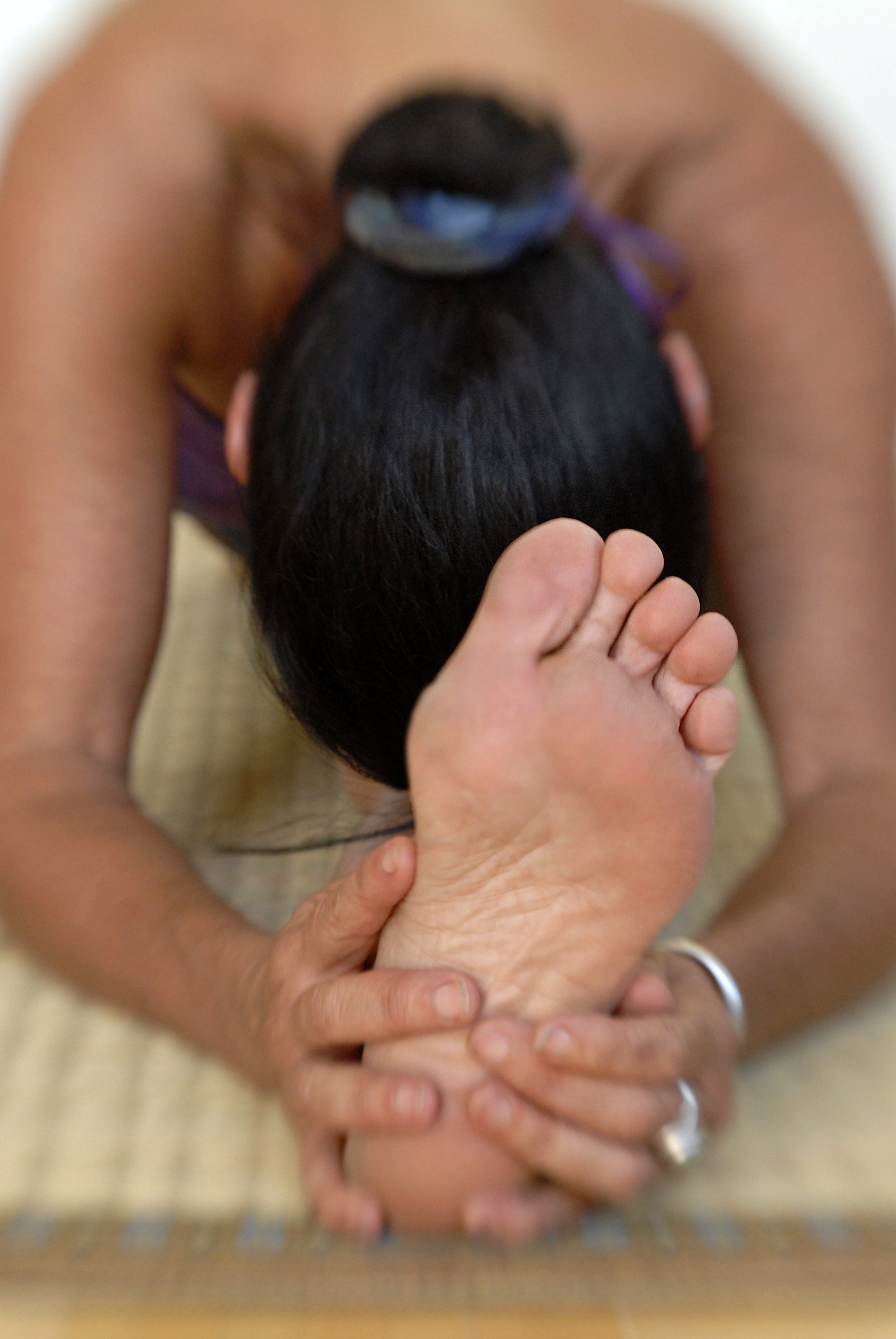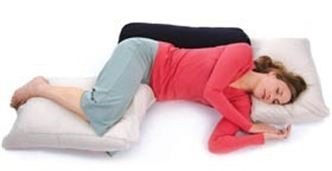Stretching
Stretching can benefit almost everyone but it is particularly important for pain patients. It is gentle (or must be done gently) and even if you have a lot of deconditioning, is a perfect way to both estpelive tension, strengthen your muscles and lessen some of the pain.
Always start off slowly, especially if you have been sedentary for some time. Breathe deeply into the stretches and never go past your limitations. It should not hurt more, if it does, lessen the stretch. If you need some reasons to stretch to get you motivated, here are some of the many benefits of basic stretches:
- Stretches help to elongate your muscles, helping to release stiffness and pain.
- Simple stretching increases your flexibility, allowing you to get the full range of motion in all of your joints. This will help with your daily activity levels as well as reduce your pain.
- Stretching will provide you with time used specifically for relaxing.
- If you suffer from insomnia, a daily stretching routine may help you to fall asleep faster and wake up less during the night.
Though stretching may initially be difficult and painful for those suffering with chronic pain, it is an excellent way to increase muscle strength while decreasing pain. When you are stretching, keep these tips in mind:
- Warm up before you start stretching. Take a bath or shower to warm your muscles or a gentle walk, if physically possible.
- Start your stretching routine slowly. Begin with one repetition of each exercise, and gradually work up to more, using your body as a guide.
- While you stretch, focus on your breathing. Breathe in deeply through your nose, and breathe out through your mouth.
- Never hold a stretch to the point of pain. Good stretches only go to the point where you feel some resistance in your muscles.
- If you are particularly stiff, try stretching in warm water. The warm water will help to relax your muscles, making the stretch less painful to hold.
- If a certain muscle is sore, prevent injury by doing just one repetition of that stretch, or hold the stretch for a shorter amount of time. Never stretch an injured part of the body.
- If you are having trouble holding your stretches, use an exercise band to help you and breathe into the stretch.
Restorative/Therapeutic Yoga
Restorative or Therapeutic Yoga is a restful, passive form of yoga designed to open the body deeply but gently. It promotes deep relaxation, induces a feeling of profound peacefulness and allows the body and mind to move into stillness. It also soothes your central nervous system, leaving you feeling refreshed, rested, and calm.
Cushions, bolsters and yoga belts are used to support your body so that it can release without effort. When supported with props, the body relaxes and opens, releasing tension in the muscles and the mind. Done in sequence, a restorative yoga practice will bring your whole body into a relaxed state, and allow your mind to become quiet and reflective.
Yoga nidra practices are often integrated into the class to support relaxation and bring balance to your whole system. Proven to reduce pain in fibromyalgia and chronic back pain, it can also help a variety of other chronic pain conditions.
Always check the qualifications of an instructor and start of very slowly; one on one sessions are preferable as the instructor can teach completely aware of your needs and pace, and though initially more expensive, once you know the poses, you have an amazing pain management tool for life.
Restorative yoga turns on the healing relaxation response by combining gentle yoga poses with conscious breathing. Each pose is meant to be held for longer than a few breaths. Because the poses use props to support your body, the right support in a pose will make it feel effortless, so your body can fully let go.
Try the Nesting Pose
Nesting pose creates a sense of security and nurturing. It may also be a position you are comfortable sleeping in, making it an excellent posture to practice to help with insomnia or other difficulty sleeping.
Lie on your side, legs bent and drawn in toward your belly. Rest your head on a pillow, and place a pillow or a bolster between your knees. Rest your arms in whatever position feels most comfortable. If available, another bolster or pillow may be placed behind your back for an extra sense of support.
Rest in the natural rhythm of your breath, observing each inhalation and exhalation as it moves through the body. Take comfort in the simplicity and effortlessness of this action. Click here for a Restorative Yoga Sequence to Gently Ease Chronic Pain.
Soft/Meditative Martial Arts
Soft martial arts, such as Tai Chi and Chi Kung, are really moving meditations. Improving your posture, breathing and awareness, they are gentle and calming practices that have been shown to benefit patients with chronic pain and variable illnesses.
Even if bedridden and simply using chi kung meditative or breathing techniques – you can cultivate and store chi, leading to balance and healing, reducing flare-ups and calming an already over-stressed nervous system. Tai Chi and Chi Kung move the blood, therefore they generate energy without much movement or stress on the body, so are ideal for individuals who have some health challenges and cannot do a lot of physical activity, such as aerobic exercise, or even walking.
Chi Kung allows everyone who desires improvements in their body to do the movements standing up. sitting or even lying down; and the breathing techniques of Chi Kung allow oxygen to flow deep into the cells, tissues and organs of the body. If you find it too painful to stand, Tai Chi in a Chair is a great book, click here or for Seated Taiji and Qigong click here.
Alternatively, Seated Tai Chi for Arthritis DVDhas great exercises. To begin to feel the chi or energy follow these gentle exercises for a beginner (see videos below); a more advanced but still wonderfully gentle exercise routine can be found here: 9 Minute Tai Chi Routine.
The slow and gentle movements of tai chi also open up energy channels, and the rhythmic movements of the muscles, joints, and spine pump energy through the body, thereby flushing out the stagnated chi, replacing it with fresh, oxygenated chi. And Tai Chi can be performed in a sitting position, making it suitable for those in wheelchairs or who’s balance is particularly impaired.
To find out more about tai chi for people with disabilities, check out this article from Action Online, about tai chi in a chair. As a form of healing exercise, tai chi/chi kung is perfect for those with disabilities, chronic pain and physical limitations. Research has shown that tai chi provides all the benefits of a rigorous workout but, because it is not strenuous, it carries no potentially harmful side effects.
If you enjoyed this post, feel free to share the love & your thoughts below or in the Guest Book. ♥
You can also sign-up to the Princess Post & receive your free Flare-Up Toolkit here:
[avatar user=”jomalby” size=”thumbnail” link=”www.princessinthetower.org” target=”_blank”]Gentle hugs x[/avatar]





It is good that you have consider the natural ways to reduce and manage your body pain. It is very much important to have the right treatment.
Thank you for your comment and I agree 100% 🙂 Anything that helps you cope is a fine thing but if natural, it’s all the finer. An integrated approach often leads to the most relief for optimum coping and the lowest pain levels too. Using as many natural approaches as possible is a big part of my personal approach. It’s unique to the individual but there are so many natural approaches that can help, as I’m sure you know first hand of course. Gentle hug ♥
It is good that you will also consider natural ways of reducing and managing the pain you feel in your body.
I’ve recently started caring for a friend whom suffers I am finding this site incredibly insightful, thank you